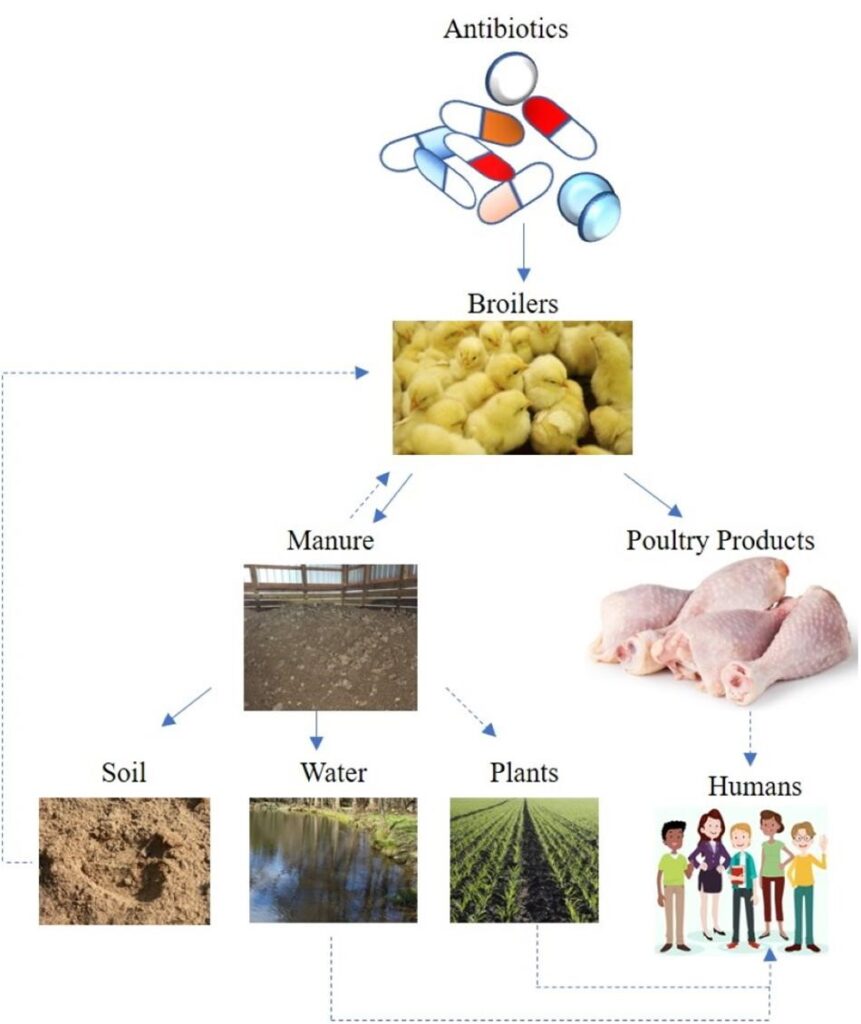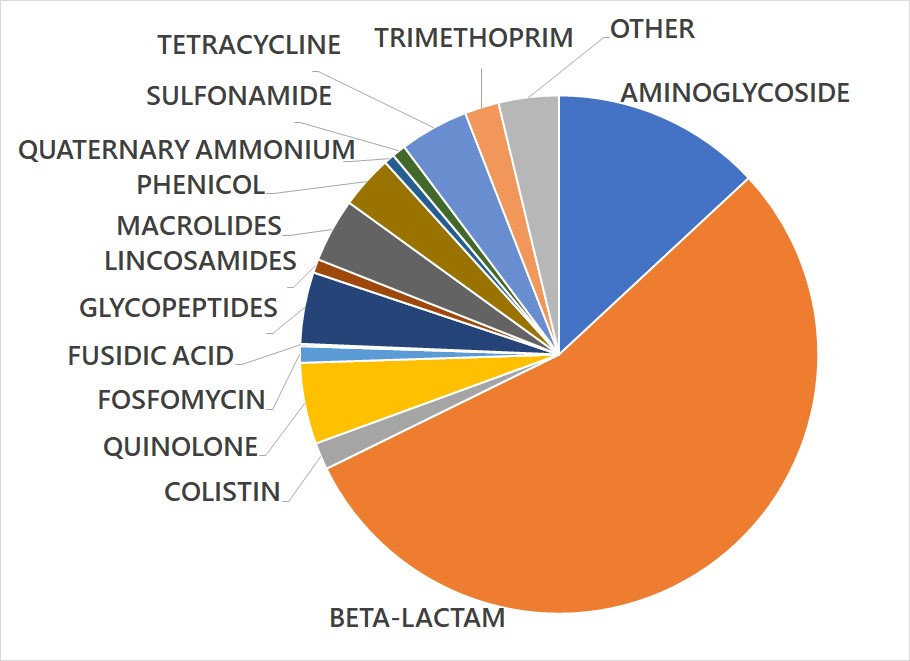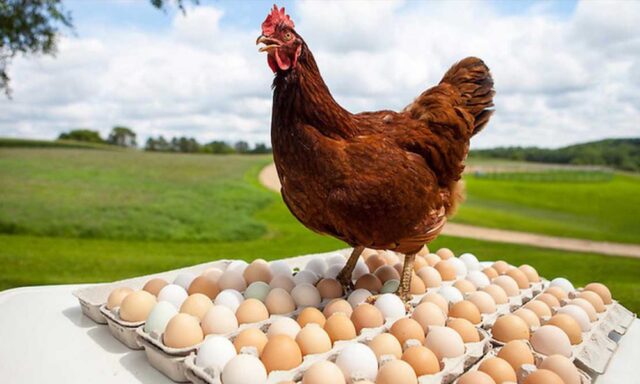Introduction
Food safety is a key topic when it comes to commercial poultry production and over recent years this topic has quickly established itself. Food safety is concerned with the hazards which may be associated with poultry meat, eggs and other products which form part of the human diet. Food safety is not a discovery of recent times, it is a natural basic instinct of human survival. Food safety and quality of food are currently big issues of major concern in developed countries. In developing countries, however, efforts to produce sufficient food to meet the requirements of the population increases, accompanied by bad economic situations often overshadow the need to ensure safe food products. Regardless, safe food is a fundamental requirement for all consumers rich or poor. Food should not be a health hazard either immediately after consumption or later.
Food borne hazards may be of physical or chemical origin, but there is currently recognition that microbial food borne hazards are considered the greatest risk to consumers. Incidents of food borne diseases have increased considerably in the last few years world-wide. Although the source of infection is mostly unknown, poultry products have repeatedly been implicated as a source of food borne pathogens for humans. Food borne infections are mostly associated with diarrhoea in children, old as well as immune compromised persons with mortality. Hazards can be introduce either during the rearing, transport, processing, packaging, storage, distribution or preparation for consumption of the poultry products.
Food borne infections are tremendously increasing due to inadequate health and bio-safety measures. As poultry producers are searching for tools to combat Salmonella in their birds and manage food safety risks. Not only Salmonella, Campylobacter species is also in its way causing a massive destruction to the poultry production and leads to severe health problems in humans. Both Salmonella and Campylobacter infections are major concerns these days. The complete eradication of Salmonella from poultry production is an incredibly difficult task. Implementation of combination of strategies including proper management, bio security, vaccination protocols, nutritional feed additives are step in the right direction. Moreover, due to drug resistance to both Salmonella and Campylobacter species, researchers and scientists are actively finding additional tools & measures to assist in managing food safety risks.

Food-Borne Pathogens
Poultry can harbour different food borne pathogens. Mainly Salmonella and Campylobacter are the most common causes of food borne bacterial diseases in humans linked to poultry. Recently, verotoxin-producing Escherichia coli 0157:H7 (VTEC) has surfaced as an additional food-borne pathogen causing human illness. Several other microorganisms such as Clostridium, Aeromonas and Listeria can also enter the human food chain via contaminated poultry carcass. Information is limited regarding the incidence and number of other pathogens associated with raw poultry which might become a greater problem in the future such as Yersinia and Bacillus. In addition, the development of antibiotic resistance in bacteria which are common in both animals and humans is also emerging public health hazard. Infected birds move unrecognized to slaughter houses and are considered as potential sources for food borne infection in human. To combat this problem strict actions should be taken like biosecurity measures to inhibit growth for each microbe and to prevent antibiotics resistance issues as soon as possible.
Strict Bio-security Measures to be Implemented
The most common species that are found mainly in chicken & turkey are Salmonella Gallinarum and Salmonella Pullorum. The most important source of Salmonella infection in poultry appears to be vertical transmission through infected eggs laid by infected carriers. Lateral spread of infection take place through contaminated feed, water, equipment and environment. Significant reservoirs for microorganisms are man, farm animals, pets, pigeons, water fowl and wild birds. Implementing a good bio-security is key in preventing the infections from outside getting into the farm. Humans are the main carrier and source of typhoid infection so to prevent it these steps should be taken:
- Restrict access to farm & flocks
- Limit the number of people in contact with birds.
- Sanitization facilities should be there.
- Proper security fencing to prevent stray dogs to enter the farm.
- There should be proper rodents and pest control schemes. Traps should be monitored daily.
- Effective bio-security and cleanliness go hand in hand.
- Clean and disinfect thoroughly between batches of birds,
- Replace bedding so as to prevent marek’s disease & avian influenza that can survive for longer duration in beddings.
- Equipment like drinkers & feeders should be washed properly to prevent any kind of fungal infections.
- Isolation of new flock of birds before bringing them into the existing flock.
- Water supply should be free from pathogens and chlorinated.
- There should be batch method of rearing so that if there is any outbreak or any spread of infection that will not lead to destruction of whole slot.
- Proper vaccination should be there.

The main challenge is the fact that Avian diseases can be hard to properly diagnose. Thus, in order to monitor the flock, there should be proper data of water and feed intake, the mortality and production on the daily basis.
Antimicrobial Resistance
For several decades, the contribution of the food animal as a reservoir of antimicrobial resistance with impacts on human health has been controversial. Antimicrobial resistance (AMR) remains a growing threat for human and animal health, lessening the ability to treat bacterial infections and furthering the risk associated with morbidity and mortality caused by resistant bacteria. Ensuring the effectiveness of antimicrobials to treat bacterial infections remains a pressing issue for both veterinary and human medicine .Mainly non typhoidal Salmonella is considered to be the most dangerous when comes to human health. Regular use of antibiotics with modern intensives food-animal/poultry production has been considered the main driver for the development of antibiotic resistance in Zoonotic bacteria like Salmonella and Campylobacter.
Fluoroquinolones like Ciprofloxacin and Enrofloxacin is mainly used to combat these infections. Resistance to fluoroquinolones requires only one point mutations in gyrA gene and resistance has increased rapidly among chicken and human Campylobacter isolates. Since, resistance to older drugs like ampicillin, chloramphenicol has been increasing so treatment options for Salmonellosis & Campylobacteriosis switched to fluoroquinolones. However, this is also showing resistance leading to increased severity, morbidity and mortality. Extended spectrum β lactamases has also been one of the leading problems these days. So to prevent further tremendous use of antibiotics we should be more focused on the biosecurity measures and farm management. As
“PREVENTION IS BETTER THAN CURE”

Preventive measures
- Proper hygiene during slaughter and proper washing and chilling of carcass decreases the chances of food borne infection.
- The final consumer risk can be reduced by preventing cross contamination of ready to eat foods from cutting boards, knifes and hands during food preparation as well as cook at temperature that kills the micro-organisms.
- As farm is the preliminary site of Salmonella & Campylobacter entry into the production, the major intervention strategies should be targeted at farm levels i.e. biosecurity measures.
- The farmers must be educated enough to implement the biosafety measures properly and effectively.

Future approach
Future efforts include: prevention of infection in live birds, development of monitoring programmes and rapid detection methods. On long-term approach, the development of breeds that are genetically resistant to colonisation by food borne pathogens should be progressed. In addition, further methods to prevent contamination and cross contamination during processing by further improvement of machine and techniques must be continue. Since the success of any safe food program on the farm and processing plant depends on personal sanitation, it is essential to incorporate education programs about microorganisms, modes of transmission as well as awareness of the reasons behind such control programs by all people involved throughout the poultry production chain. The weakest point in establishing good sanitary procedures in poultry production is poor training of employees.
So, proper training should be given to the workers. In the farm-to-fork concept, post processing food handling is very important in reduction of food borne infections. Proper cooking should destroy the microorganisms present on the poultry carcass. Cross-contamination of the foods which are not to be cooked contributes to the problems arising from unsafe food handling. Effective education programs must also be implemented to increase public awareness and the necessary measures to be taken for protection against microbial contamination in food products. Finally, development and application of acceptable methods for end-product decontamination and preservation must be progressed and/ or re-evaluated.
Conclusion
It is evident that majority of infections can be attributed to poultry. Human Campylobacteriosis and Salmonellosis has been increasing in the past decades and poultry has been identified as the major contributor. Colonization of poultry occurs at farm levels where it is necessary to focus on enhancing the biosecurity and implementing it properly as whole world has come to realize the importance of biosecurity and quarantine during COVID 19 pandemic. And main area of concern is antibiotic resistance to the infection. So, the time has come to implement it strictly in farms to avoid any chance of outbreak of zoonotic diseases and thus, proper managemental and biosecurity measures play a beneficial role for healthy ad safe meat production that will promote better health & overall the better growth of poultry industry.
Also, read | Food Safety through Eggs
Author:

Dr. Himani Ravi
M.V.Sc Scholar, Department of Veterinary Microbiology, DGCN College of Veterinary & Animal Sciences, CSK Himachal Pradesh Krishi Vishvavidyalaya, Palampur (H.P.) 176062
Corresponding author mail id – himani111296@gmail.com















